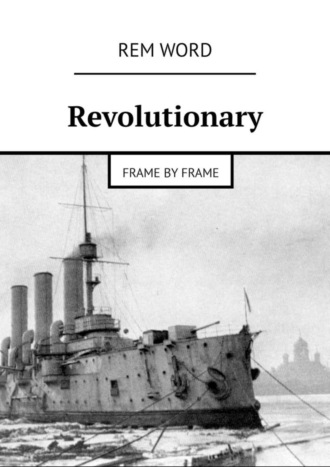
Полная версия
Revolutionary. Frame by frame
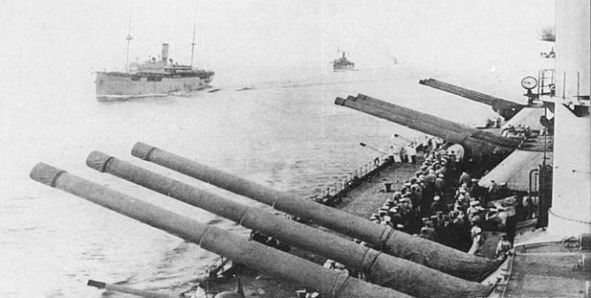
We are aboard the Russian dreadnought “Catherine II”. From December 1915 the ship participates in raids on the Turkish coast. During the patrol of the Black Sea, on January 8, 1916, Catherine the Great met with the nominal owner of the water area from Turkey, the heavy cruiser “Geben” (to delight the ears of the Ottoman allies, Yavuz Sultan Selim). After several hits of fragmentation shells 305 mm. the guns of the “Empress”, with 20 km., German-Turkish cruiser leaves the scene of the battle. Do you hear the hubbub, the hum of mechanisms and the splashing of waves? Music of the time – waltz “Amur waves” (listen) … вальс “Амурские волны”, слушать
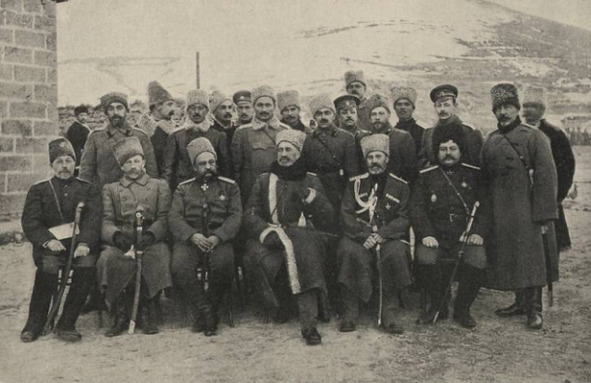
Erzurum offensive operations of the Russian troops (the Caucasian army) were preceded by successful defensive actions – the Alashkater operation on July 9-August 3, 1915, and the Battle of Keprikeo on December 28, 1915 – January 7, 1916. The attacking Turkish corps were bled off territory), or else and significantly pushed aside. Part of Persia is occupied. In order to avoid the entry of this country into the war, the troops of the Russian Empire go on the line of direct attack deep into Turkey. In the photo – the commander of the Caucasian army, General N. Yudenich (center) with a group of officers, 1915.
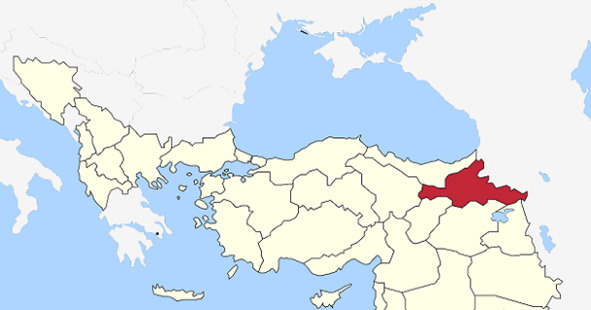
The city-fortress of Erzurum is the center of the eponymous administrative region of Turkey (approximately in the center of the area highlighted in red). The plans of the Russian command include the re-creation of the well-known Great Armenia known since ancient times, as well as the inclusion of some especially tasty regions of the Ottoman Empire directly into Russia. First of all, the General Headquarters, led by Nicholas II, is interested in the Straits and Constantinople-Istanbul. As part of the Russian army, despite some restrictions on the admission of volunteers, thousands of ethnic Armenians are fighting. Some of them take up arms before the beginning of the Armenian Genocide by the Turks, others after, so that the cause and effect of the first state terror in the twentieth century are difficult to establish. It should be noted that the Armenians themselves are cruel to the Muslims under their rule. It is precisely for this reason that Russians, who at the present time bear the cross of the highest tolerance in the world, do not seek to accept Armenians into the ranks of their units.
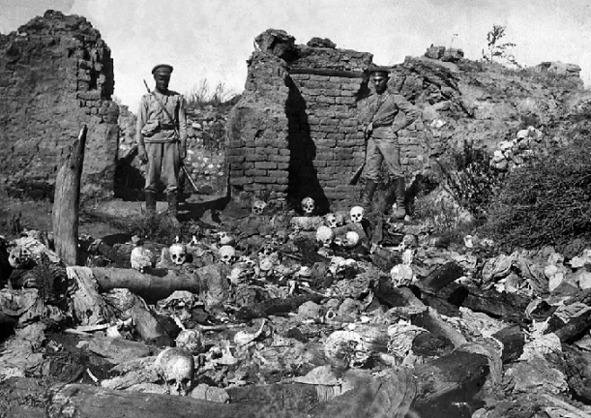
Russian soldiers visiting the Armenian settlement destroyed by the Turks. The surroundings of Erzurum, 1915
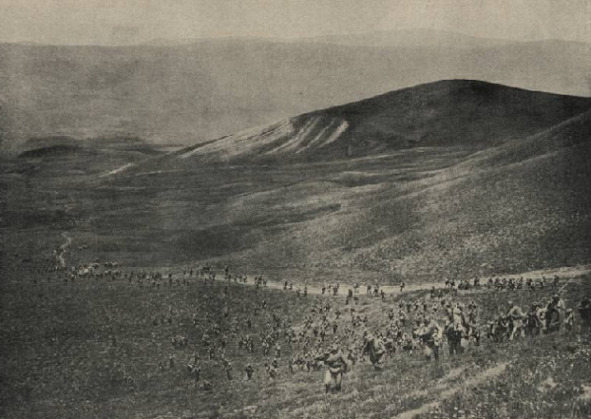
The forces of the opponents are comparable. The Caucasian army has 180 thousand fighters, the 3rd Turkish army is 135 thousand. Turkey sends a certain number of troops to Mesopotamia (northeast of modern Syria), to defeat the British. After that, the Ottomans intend to do away with the army of Yudenich. Russian commander acts on the lead. On January 7, after the artillery preparation, units of the Caucasian army begin the offensive. In a series of brutal attacks and counterattacks, the Ottoman morale is cracking. Photography – Russian battalion takes place in battle formation, Northern Turkey, 1916

Russian units use the latest military news of their time. Aerial photography of enemy positions is conducted from airplanes. In the course of the whole range of artillery – from light cannons, suitable for moving on mountain slopes, to heavy 152 mm. siege mortars. Troops are constantly working out the interaction. Yudenich creates mobile assault detachments, saturated with tools and machine guns suitable for carrying out a particular operation, and possessing engineers. Photo – a mountain platoon with a field gun advancing on the approaches to Erzurum, winter 1916.
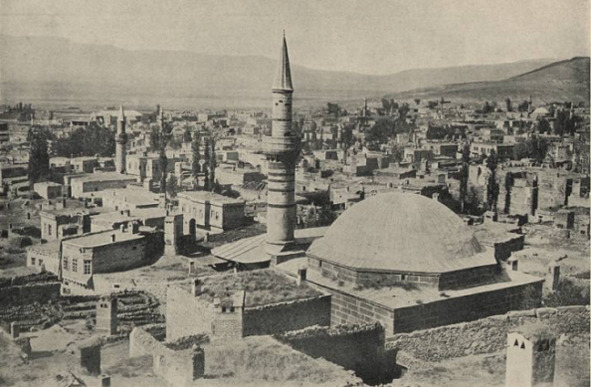
The storming of the fortress is carried out on the night of February 11, under the cover of a blizzard. Russian soldiers dressed in white camouflage coats. The enemy’s fire causes minimal damage to the units of the Caucasian Army. Total irretrievable losses since February 10: Russia – 2,400 people, Turkey – 25,000 killed and 15,000 prisonersPhoto – city-fortress Erzurum, 1916
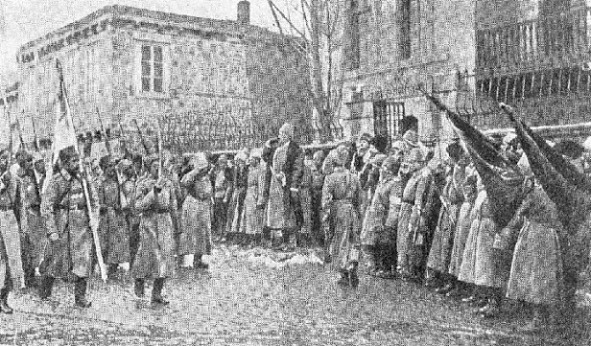
A half-faded, faded photograph of a century ago – Russian troops are entering Erzerum. Turkish banners bow in humility. And, this is the last victory of Russian weapons in the First World War in the South-East
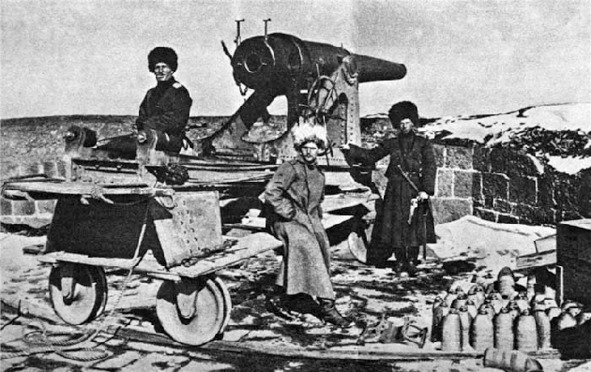
Russian soldiers at the guns of the Erzerum fortress. First half of 1916. Randomly selected photo.
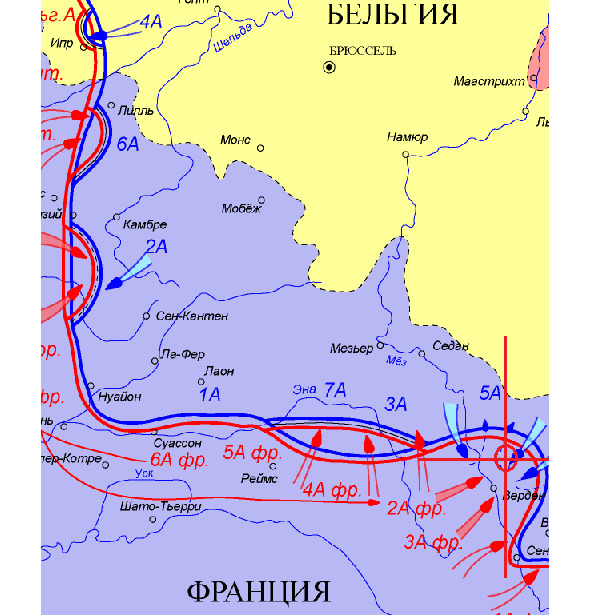
At the beginning of 1916, the main idea of the German command was to cut off the ledge of the French defense near the city of Verdun, surround 8 enemy divisions, and develop an offensive against Paris. Another version of military historians – the Germans are going to draw, one by one, the Allied Anglo-French armies into the slaughterhouse, in order to bleed the Entente with the help of their superbly developed heavy artillery. The operation starts on February 21, 1916. After an 8-hour ruthless artillery preparation, the German infantry units begin to storm the enemy’s trenches.
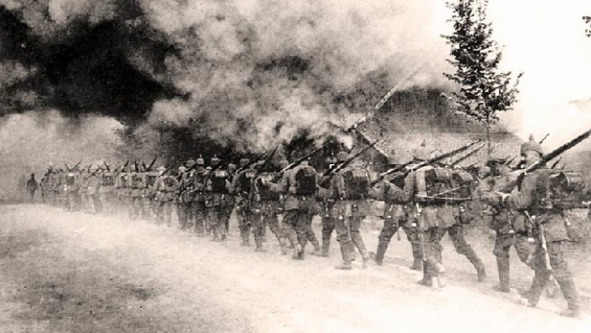
German battalions advance in three lines 80—100 m apart. Scouts, assault groups and sappers are ahead, then dense groups of the actual, infantry, reinforced by flamethrowers, and machine-gun subunits. In one day, one can advance one to two kilometers in this way. Photography – German columns moving to the front line, Verdun, early 1916

Further, from February 27 to March 6, according to a kind of “Road of Life”, or even literally “Sacred Road” (La Voie Sacrée) to a single highway, for 6,000 vehicles, the French deliver 190,000 people and 25,000 tons of military cargo. In the course comes heavy artillery Entente. At the beginning of the campaign several large forts surrender almost without a fight. However, the entire Verdun is a single, fairly extensive fortified area. For some time now the battle has resulted in a chain of fiercest battles for every French bastion. Germany depletes not only the units of the Entente, but also itself. By June 23, 1916, the offensive stops. The photograph is a large-caliber French gun. Verdun, 1916
Конец ознакомительного фрагмента.
Текст предоставлен ООО «ЛитРес».
Прочитайте эту книгу целиком, купив полную легальную версию на ЛитРес.
Безопасно оплатить книгу можно банковской картой Visa, MasterCard, Maestro, со счета мобильного телефона, с платежного терминала, в салоне МТС или Связной, через PayPal, WebMoney, Яндекс.Деньги, QIWI Кошелек, бонусными картами или другим удобным Вам способом.



